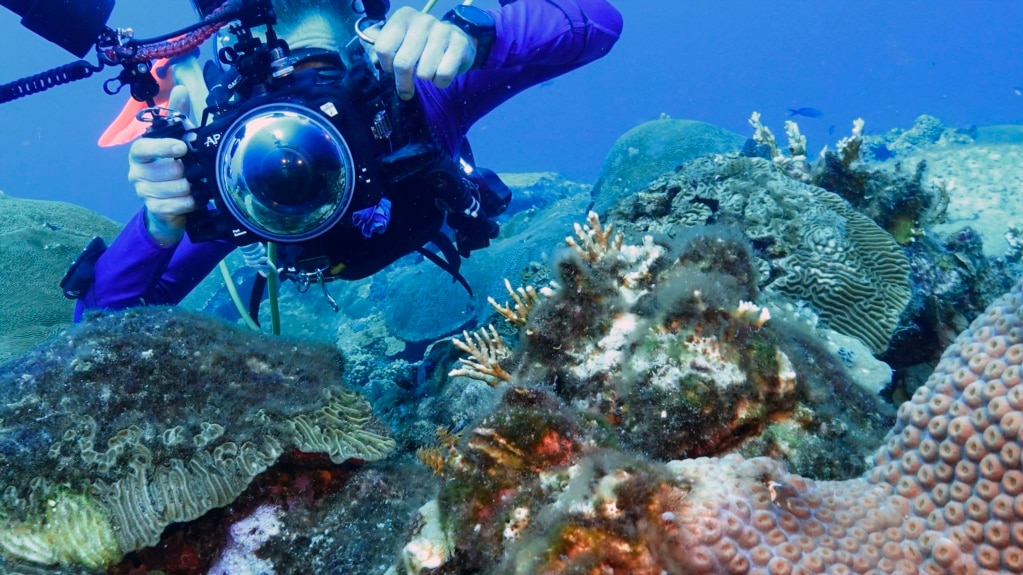The U.S. National Oceanic and Atmospheric Administration (NOAA) says changes in ocean temperature are the leading cause of coral bleaching around the world.
From Australia’s Great Barrier Reef to the waters of Florida, it happens when warm water causes corals to expel their colorful algae and turn white.
Derek Manzello is the head of Coral Reef Watch, which is part of NOAA. He said at least 35 countries and territories across five oceans and seas reported coral bleaching.
He said that by the year 2040, all of the world’s coral will suffer from bleaching if water temperatures do not cool. He said coral needs extended periods of cooler water to recover from bleaching. If the water does not cool, he said, “the corals aren’t going to have a chance to recover.”
Gulf of Mexico corals
But in the Gulf of Mexico, about 160 kilometers south of Galveston, Texas, a large coral reef is still doing well.
The reef is part of the Flower Garden Banks National Marine Sanctuary. The reef formation covers over 400 square kilometers. It started with just two reef areas, called banks, in 1992. It now has 17 banks. It is described as undersea mountains of yellow, orange and pink coral as far as the eye can see.
Michelle Johnston oversees the protected marine area for the federal government. She said seeing that much coral in one place is “magnificent” and rare.
Johnston said fishermen used to tell the story of a colorful area in the Gulf of Mexico far from shore 100 years ago. But, scientists were uncertain that a coral reef could exist in such deep water. When divers finally reached the reef in the 1960s, they were surprised to find marine life. Johnston said the plants and animals do so well because the reef formed on top of mountain-like salt domes, high enough to catch sunlight.
During the recent summer of record-breaking heat, Johnston said, the reef did experience some bleaching but nothing as serious as in other parts of the world. But that does not mean the reef in the Gulf of Mexico is not vulnerable to climate change. She is concerned about the area getting too hot and the coral dying off.
Officials who watch over Flower Garden Banks say the reef has suffered more serious bleaching in the past, but its depth and health helped it recover. The reef is deeper – 18 meters - than many others that are often just offshore.
Andy Lewis of Houston, Texas first saw the reef about 10 years ago. He loved it so much that he became an expert diver and started a company that leads dives to Flower Garden Banks.
“It’s just a real adventure,” he said.
Scientists are working to help the reefs stay healthy. For example, boats are not permitted to anchor themselves to the reefs. They must connect to special floating cables to stay in one place. Other workers help remove invasive fish and creatures from the area.
Kelly Drinnen is an education and outreach specialist for the Flower Garden Banks. She said, “because coral reefs are declining all over the globe, when we find ones that are healthy, we want to keep them that way.” Drinnen added that they could also provide information that can help other reefs stay healthy or recover from bleaching.
In 2010, the Flower Garden Banks corals were not damaged by the large oil spill that followed the Deepwater Horizon explosion. Other reefs in the Gulf of Mexico were. So, researchers are using data from the reef to help guide the restoration of the damaged ones.
Researchers are also comparing the genetics of Flower Garden Banks corals to corals in other parts of the world. And they hope to grow and possibly replant them in other places.
I’m Dan Friedell.

